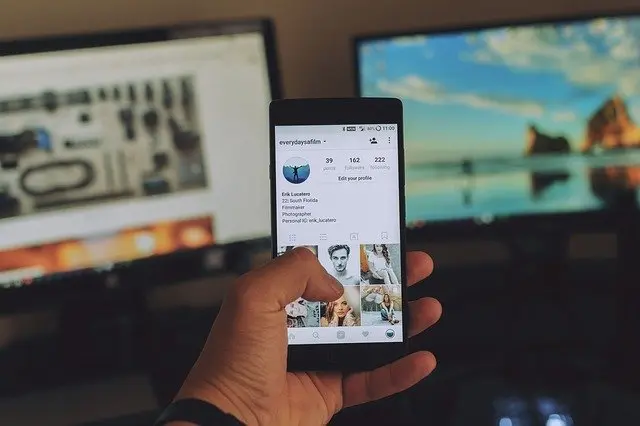ADI, which stands for “Automated Dialing System,” means making phone calls with a computer instead of dialing numbers by hand. Many businesses use this automated dialing system because it saves money, time, and effort. You can also use automated dialers to get more sales and save money on long-distance charges.
This article covers basically all you should know about an Automated Dialing System.
Automated Dialing System
An automated dialer is a software that allows you to make calls using a pre-recorded message. It’s one of the most popular ways to make telemarketing sales calls, especially if you have a lot of people on your list who don’t want to be bothered with voicemail messages.
Automatic dialing systems are used to make telephone calls automatically. They can also be known as automatic dialers or simply “automatic” for short.
The system is used to make calls to people on a list of phone numbers.
The idea behind automated dialers is simple: they allow you to record your message and save it in their system so that when someone picks up the phone, they hear exactly what you want them to hear (and nothing more). This allows companies like yours, which may specialize in making high-quality sales calls, to access even more customers than we would otherwise be able to find!
Are automatic dialers illegal?
Automatic dialing systems are legal in the United States, but you should know that some restrictions exist. For example, your local government may limit or ban their use if you live in a state like California that doesn’t allow automated dialing systems. You can also check with your local government to see whether they have any regulations on automated dialers.
However, if you’re unsure what kind of automated calling software is allowed by law and how it will work best for your business model and goals, talk to an attorney who specializes in this area before you decide.
Automated Dialing Software
Automated dialing software is a computer program that can be used to call a large number of phone numbers in a short amount of time. This type of dialer can predict which numbers are most likely to receive calls, so it only makes sense that this software would be used by businesses that want their employees or customers on their side.
Predictive dialers are used by businesses to contact customers, prospective customers, and employees more efficiently than manual processes do. The best predictive dialers will help you reach out quickly without wasting time on low-impact queries or unnecessary contacts like voicemail boxes where no one is available at that moment—and all without spending any money!
There are three dialing modes: predictive dialer, progressive dialer, and preview dialer.
For decades, auto-dialers have been available on the market. Traditionally, companies upload phone number lists for outbound campaigns. The tool then automatically dials the numbers on the list.
Dialer capabilities have evolved over time. Most solutions today include at least three dialing modes: predictive dialer, progressive dialer, and preview dialer.
Predictive Dialer Software
Predictive dialers call multiple numbers at once, assuming that a certain percentage of calls will be dropped or not answered. Agents are assigned to live calls based on availability and wait time.
Predictive dialing systems gather information such as the percentage of answered calls, the average number of rings before an answer, and the average call length. This information is then analyzed statistically to forecast when agents will be available. The predictive dialing system uses this forecast to determine the rate at which it dials numbers, maximizing the time agents spend on the phone.
This software also filters out busy signals, voicemails, and unanswered calls, among other things, and avoids numbers on the National Do Not Call Registry. These capabilities ensure that only live calls are handled by agents.
In PIMS Dialer, you can program a dialer for an outbound campaign.
Power Dialer/Progressive Dialer Software
Progressive dialer software (also known as power dialer software) dials one call for each available agent at a time. You can set call-to-agent ratios, which means the system will dial a set number of lines for each agent. The power dialer cycles through multiple campaigns’ calling lists and paces itself based on abandonment rates (if rates begin climbing, the system slows its dialing pace dialing).
Calls are placed automatically with a progressive or power dialer. Certain calls (such as unanswered calls) are screened out by the system, but in some cases, agents must determine whether they are connected to a human or voicemail.
Preview Dialer Software
Before dialing, preview dialers call one number at a time and deliver contact records to agents. This allows agents to double-check contact information before the call. Users can specify how long agents can review records, and agents can choose whether or not to skip a number.
Other modes of auto dialer software
Standard modes include predictive dialer, progressive dialer, and preview dialer, but there are a few advanced modes to be aware of:
- For agentless campaigns, message lay-down dialing delivers a pre-recorded message to recipients.
- Outbound interactive voice response (IVR) displays a message to recipients of outbound calls, along with an IVR menu from which they can respond (such as a late payment reminder and an IVR menu allowing for self-service payment). If the IVR cannot meet the contact’s needs, the call can be transferred to an agent.
How Does Auto-Dialing Work?
Traditional auto-dialers function with software and voice modems to aid human agents by automating time-consuming processes such as dialing phone numbers. An auto-dialer can connect a call to a live agent or play a pre-recorded message after it is answered. If the call goes to voicemail, auto-dialers can either leave a message or flag the number in their system to be called later.
These technologies allow workers to focus on the demands of their customers rather than dealing with ringing or ignored calls. In general, auto-dialing systems function in four stages:
#1. Auto-Dialer Software
Computer software allows for the usage of auto-dialing systems. The software and service provider you choose determine all of the accessible features and capabilities of an auto-dialer. Most basic auto-dialing systems may be run on standard computers, with a direct relationship between CPU power and audio quality. However, for contact centers with more than 10,000 channels, you’ll need a powerful server rack with many CPU cores, plenty of RAM, and a fast broadband connection to run your system.
#2. Human Agents
While some auto-dialing systems use prerecorded messages, live operators play an essential part in many auto-dialing instances. You’ll need at least one employee to record messages, pick the proper call list, set the calling mode, and start the system. To handle inbound calls, many auto-dialing systems necessitate a significant number of workers.
#3. Voice Modem
Voice modems are required to send and receive voice recordings over a phone. Because this technology was designed for data and fax communications, ensure that any modem or device you employ can support voice transmissions. If you’re unsure whether a modem can handle voice communications, seek any hint that it comes with voicemail software.
#4. VoIP or Landlines
Calls can be connected using auto-dialing systems using either VoIP or landlines. Large-scale auto-dialing systems, on the other hand, are shifting toward cloud-based, integrated systems that connect with top CRM software solutions and contain a plethora of advanced capabilities that may eliminate the need for a voice modem.
You’ve probably been routed through an auto-dialing system with a callback feature if you’ve ever called a customer service department and been offered the choice to hold on the line or have someone return your call as soon as a representative is available. Suppose you choose to be contacted when the customer support staff is available. In that case, you are effectively waiting for the auto-dialer software to locate the next agent and place your call when one becomes available.
Who Requires Dialing Software?
Many businesses utilize auto-dialing software, including outbound sales, customer support, charities, political groups, local governments, and debt collection agencies.
Large customer care teams with a high volume of incoming calls can utilize auto-dialing software to avoid extended hold times and instead wait for a callback. During election cycles, political organizations and campaigns use auto-dialing software to reach out to potential voters with pre-recorded messages to influence decision-making. Local governments and schools deploy dialer solutions to notify residents of natural disasters or school closures due to severe weather.
Important Auto Dialer Software Features
There are several features in auto dialer software that controls how the dialer manages lists, initiates calls, and reports data. Some of these features are common, while others are only available from a few vendors:
- Call Disposition
- Call Recording
- Answering Machine
- Detection
- Call Scripting
- Local Caller ID
- Campaign Management
The Benefits and Drawbacks of Autodialers
While auto-dialers have been stigmatized due to their association with robocalling and unsolicited telemarketing, their widespread use benefits businesses and customers.
Benefits
Reduced agent wait times:
Today’s most potent auto-dialer systems contain sophisticated voice detection technology that tells them when to dispatch a call to a live operator in real-time. Because there is no downtime spent waiting for ringing and unanswered phone calls, agents can go from caller to caller quickly.
Increased conversion ratios:
The data offered by preview dialers can be used to personalize every human connection. Preview dialers also give sales representatives the information they need to identify high-quality prospects, allowing them to focus their efforts where they will be most beneficial to your firm.
Reduced customer wait times:
With callback functionality, these systems enable inbound callers to easily reach an agent rather than being placed on hold or routed to an auto-attendant or voicemail.
Drawbacks
More workers:
A big workforce is often required for predictive auto-dialing systems. The predictive dialing algorithms do not route calls based on availability; instead, they forecast how long an agent will spend on each conversation and will begin dialing the following number on their list a few seconds before the agent hangs up. If all of your agents on a small team are busy, the person on the other end of the line may not be able to speak with you immediately.
Errors in identifying live calls:
Some auto-dialing software may struggle to distinguish between a live voice and a voicemail greeting in low-quality call situations. Voicemail greetings will be routed to live agents in these cases, who will then have to decide whether to leave a voicemail or hang up, neither of which is the optimal use of an agent’s time.
What kind of Buyer are you?
Not all buyers have the same requirements. Depending on which category you fall into, you’ll need to consider the following factors when evaluating software providers:
- Collections buyers will typically require full predictive dialers with vertical dialing capabilities. Certain call center vendors have extensive experience working with companies in the collections industry and provide robust dialer solutions.
- A progressive dialer may be more beneficial to buyers in B2B sales. You may not want predictive dialing if you have a list of highly valuable leads.
- Buyers who want to integrate dialers with leading customer relationship management systems (CRMs) should look into software providers that offer such integrations.
- Buyers looking for proactive customer service dialers should look for options that include automated messaging for multi-channel notifications and inbound/outbound blending to support outbound functionality in call centers.
Is predictive dialing illegal?
In the United States, predictive dialing is legal. However, it’s essential to understand that calls may not be made until the end of a call sequence or even after you hang up on your phone.
In Canada, predictive dialing is illegal, although it can still be used if it’s part of a system that allows users to make calls without being prompted for each number they dial. The same goes for Australia and the UK; however, there’s no guarantee that people will get their calls through if they try predictive dialing there.
India also has strict laws about how this technology works, but again, you’ll need access to more modern technology (like VoIP) to use it effectively here anyway!
Free Auto Dialer Software
Free autodialer software is a great way to get started with automated calling. It’s easy to use and can be downloaded onto your computer or phone in minutes.
The best free auto dialer software is going to be able to do the following:
- Record your calls for training purposes
- Send you real-time reports on who’s calling, when, and how many times
- Automatically dial multiple numbers in a row
How do I set auto-dialing?
Auto dialing is a great way to save time, money, and energy:
- You can set up an autodialer to call your customers on their phones. This saves you from manually doing it every time they call in.
- You can also use predictive dialers so that when someone calls, it will automatically be connected with the person who called before them or after them based on their history of interaction with other people associated with that company or organization (e.g., friends through Facebook).
- Finally, you can use multi-line systems where multiple lines are assigned for each customer so that when one person calls in, there is someone else ready at the receiving end, waiting on hold until they pick up the phone again themselves!
Summary
We hope this article has helped you understand what an automated dialing system is, how it works, and what it can do for your business.






